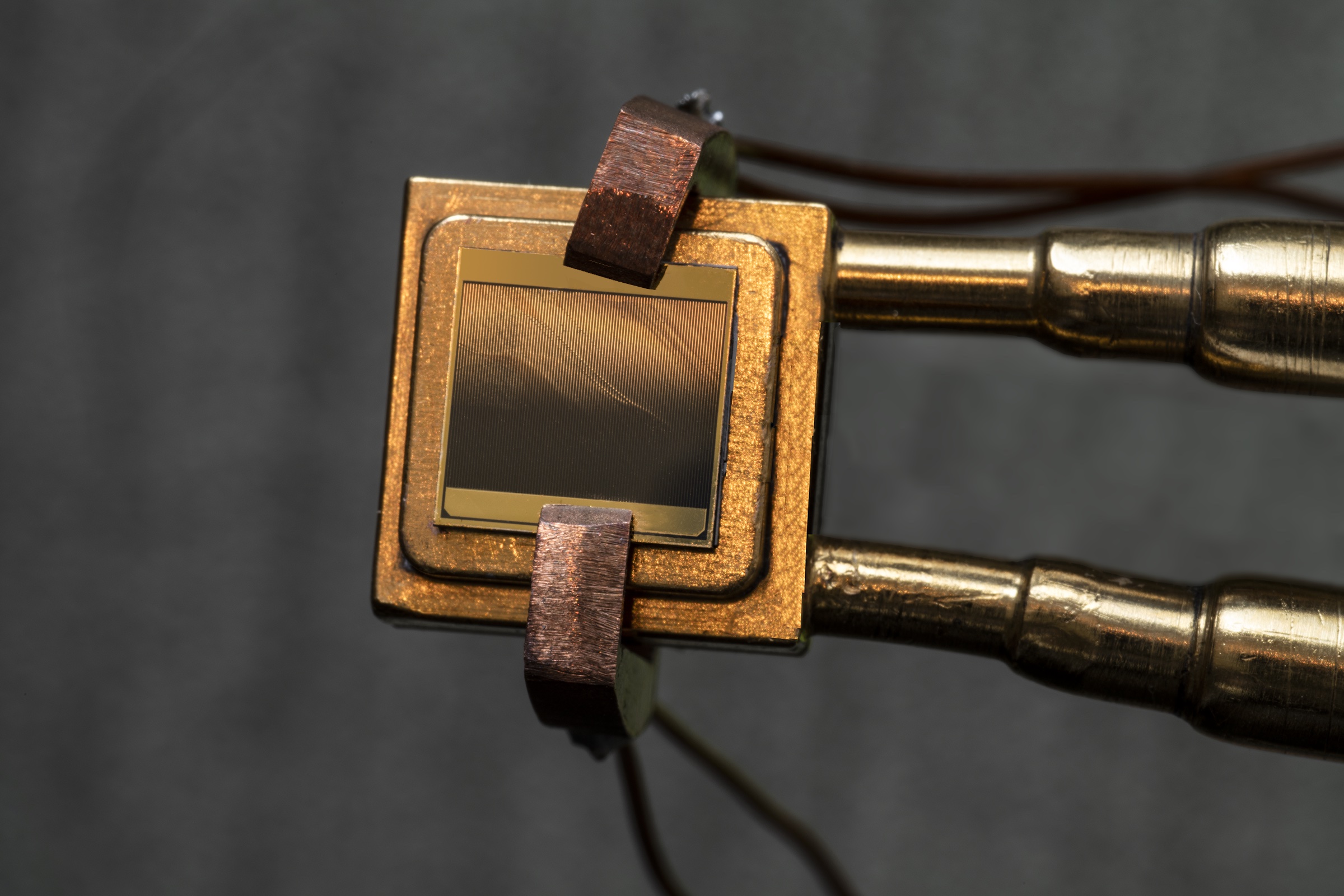Thermophotovoltaics (TPV) are a technology that can turn light into electricity, just like solar panels. However, instead of taking their energy from the sun, TPVs make use of the light emitted by a hot object in close proximity. We demonstrated a new record-breaking efficiency of more than 40% for TPVs, enabling the viability of this technology for ‘thermal battery’ energy storage.
Views 2246
Reading time 4 min
published on Feb 22, 2023
Thermodynamics initially developed as a framework for understanding and improving the performance of heat engines as they powered the industrial revolution. Since then, heat engines have gone on to play a pivotal role in modern society, as more than 90% of electricity today is generated by heat engines. One specific class of heat engines emerged as the primary workhorse of the power industry, namely the turbine, which is used for electricity production from coal, natural gas, nuclear and concentrated solar. Turbines proliferated because of their high efficiency (25-60%) and their low cost per unit power (CPP) generated ($0.5-1/W). However, since turbines intrinsically require moving parts, they are relatively expensive to maintain, and put restrictions on the materials that can be used for their construction. Modern turbines have reached practical limits in terms of cost and efficiency, barring new breakthroughs in material science. Solid-state heat engines, such as thermophotovoltaics (TPV), which have no moving parts, possess an advantage in this sense, enabling operation at significantly higher temperatures than turbines. TPVs can enable novel approaches to energy storage and conversion that use higher temperature heat sources.
TPVs operate by the same physics as solar photovoltaics (PV, i.e., solar panels), but rather than using the sun as their light source, they use the light emitted by a hot object called an emitter. All hot objects emit light, and the spectrum of light emitted depends on the temperature, for example a red-hot piece of steel is cooler than a white-hot piece of steel. A TPV can only convert certain frequencies of light to electricity, and it is therefore important to match the type of TPV with the temperature of the emitter. One strategy to improve the efficiency of TPVs is band-edge filtering, which reflects some of the unabsorbed light back to the emitter using a mirror at the back of the TPV. This reduces the energy required to keep the emitter hot, thereby boosting the efficiency. Historically, TPVs have been paired with emitters with temperatures of less than 1300°C and demonstrated efficiencies below 32%. While TPVs have been around since the 1950s, interest has renewed due to improvements in efficiency, fabrication, and the emergence of various high-temperature applications such as thermal energy storage, and electricity generation by burning hydrogen or other fuels.
Recently our team broke the TPV efficiency record, reaching an efficiency of 41.1%. We achieved this through the first experimental demonstration of high-bandgap tandem (two junction) TPVs. Tandem cells boost efficiency by more efficiently converting the incoming spectrum of light to electricity. The bandgap is the technical property that largely determines what frequencies of light the TPV can absorb, and higher bandgaps allow paring with higher temperature emitters. Additionally, higher bandgap cells are also more efficient due to lower electrical losses.
The tandem cells were designed to operate with emitter temperatures in the range of 1900 – 2400°C for a thermal battery. A thermal battery is an energy storage device for the electricity grid, which stores energy as heat in cheap graphite. To discharge the system, heat is converted back to electricity by radiating light from the hot infrastructure to TPV cells. The projected cost of the system is over an order of magnitude cheaper than Li-ion batteries. Since the electric output of wind and solar energy is highly variable, energy storage technologies are essential for decarbonization of the energy grid. The demonstration of highly efficient TPVs is key because the energy efficiency of a large-scale thermal battery is mostly determined by the efficiency of the TPV.
Recently another research group was able to increase the amount of light unused by TPVs reflected back at the emitter. Combining this breakthrough with our work could lead to TPVs with efficiencies higher than 50%. Our contribution demonstrating high efficiency TPVs shows that TPVs are a serious option for a heat engine in a variety of high-temperature applications and can be competitive with turbines with respect to efficiency and cost. We therefore envision that TPVs may ultimately play a key role in decarbonization.
Original Article:
LaPotin, A., Schulte, K. L., Steiner, M. A., Buznitsky, K., Kelsall, C. C., Friedman, D. J., Tervo, E. J., France, R. M., Young, M. R., Rohskopf, A., Verma, S., Wang, E. N., & Henry, A. (2022). Thermophotovoltaic efficiency of 40%. Nature, 604(7905), 287–291. https://doi.org/10.1038/s41586-022-04473-y
 Maths, Physics & Chemistry
Maths, Physics & Chemistry



